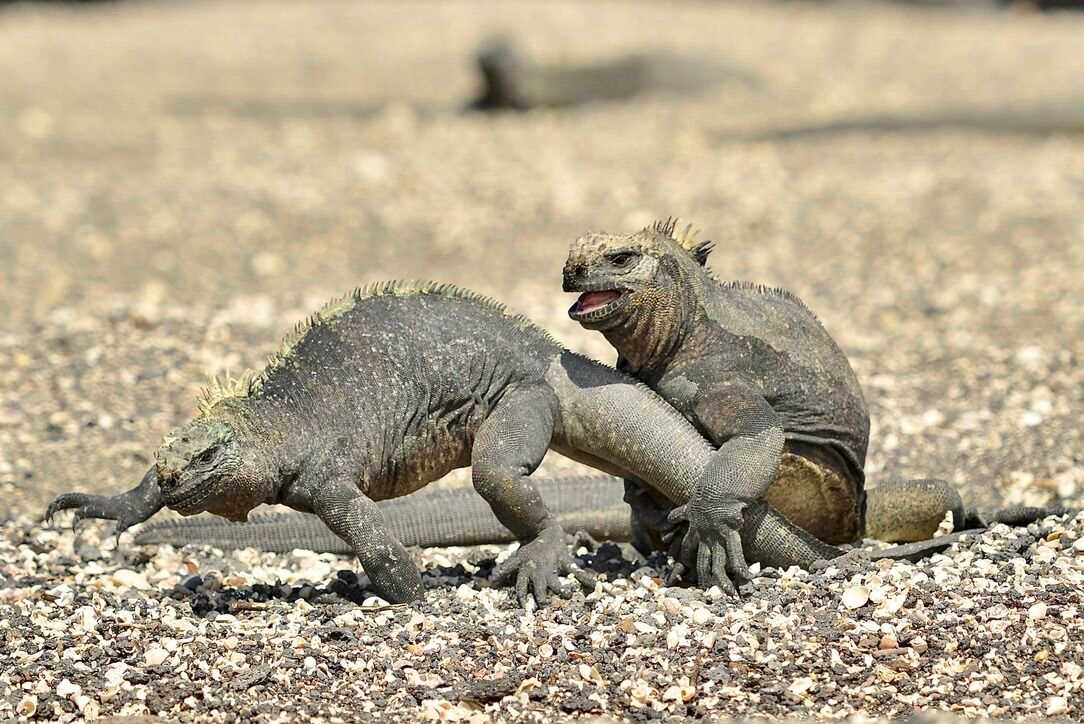Located in the west of the Galapagos, Fernandina and Isabela are considered the youngest islands in the archipelago. The islands are home to a wide variety of endemic terrestrial and marine species. After a long navigation from Rabida Island, National Geographic Endeavor II finally arrived at the Bolivar Channel, which separates Fernandina from Isabela.
We started our day early in the morning by exploring the calm seas west of Isabela for marine life. Heading south, the dramatic landscape looked impressive, with the gigantic Ecuador Volcano and its huge lava flows. This is one of six active volcanos on Isabela Island. Unlike the others, the volcano’s caldera is exposed, collapsed by a gigantic explosion that occurred thousands of years ago. Today, the volcanos bear witness to the island’s explosive geologic past.
After breakfast, we boarded Zodiacs to visit Punta Espinoza on Fernandina Island. Punta Espinoza is one of the most spectacular sites in the Galapagos, and it is home to the largest population of marine iguanas in the archipelago. It is also home to one of the most active volcanos in the world, Volcan La Cumbre. The landing dock was full of marine iguanas. They all touched one another, trying to warm up together after a cold night. Walking along the white sandy beaches, we observed female iguanas working hard to make their nests. The surreal landscape captivated our guests as they observed how these incredible creatures survive in this barren place. We arrived at flightless cormorant territory and watched as the birds collected seaweed or dried out their stumpy wings. Two Galapagos hawks observed the iguanas attentively, as if selecting the best prey. Little by little, the sun warmed up the environment and some of the iguanas headed to the ocean to feed. On the beach, Galapagos sea lions rested indifferently.
Midmorning, we returned to Fernandina Island to discover the incredible underwater world with its unique flora and fauna. We had incredible encounters with sea turtles, flightless cormorants, sea lions, and colorful tropical fish. Some of the fish swam near the sea turtles to clean their bodies, removing and eating ectoparasites.
During lunchtime, National Geographic Endeavour II sailed north towards Punta Vicente Roca at Isabela Island. Midafternoon, we boarded Zodiacs and headed to the seashore where we spotted Galapagos penguins, flightless cormorants nesting along the coast, green sea turtles, fur seals, and Galapagos sea lions. The ocean looked murky due to upwellings in the area, demonstrating the richness of this part of the Pacific. The huge volcanos showed off their incredible geological features with titanic cliffs. This evidence of great explosive eruptions helped us understand the formation of the archipelago millions of years ago.
We returned to the ship and began sailing north across the equator. We commemorated this change in hemisphere with a great party and wine tasting. We did the limbo underneath a string of Ecuadorian flags. In the west, a beautiful sunset marked a great ending of a magical day in the Galapagos.







